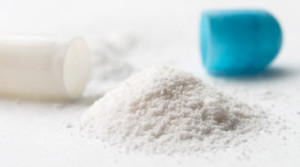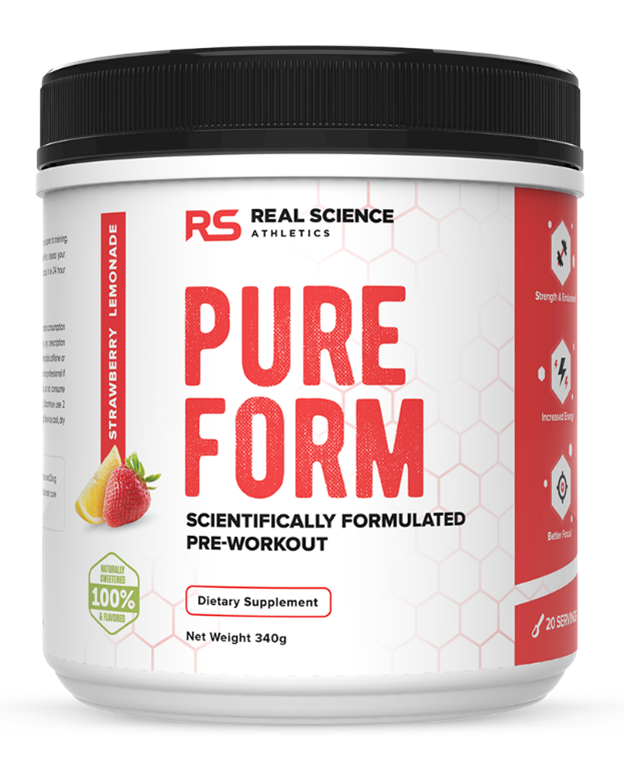3 BIG PROBLEMS WITH 95% OF PRE-WORKOUT SUPPLEMENTS

Pre-Workout Problems? Let’s Talk About It.
Let’s face it; most supplement companies have a pre-workout problem. That means you probably do, too.
When it comes to fitness supplements, the pre-workout category is really a complete and utter tragedy for the most part.
When you strip away all the crazy marketing hype or flashy endorsements and actually dissect the labels step by step, the vast majority of pre-workouts on the market just don’t make the cut. There are a variety of reasons this is the case.
For example, take my reviews on pre-workout products by Kali Muscle and Athlean-X. Companies like these will use unproven ingredients that aren’t backed by solid research. Even the ingredients that are worthwhile tend to be under-dosed.
Also, there’s still the issue of proprietary blends, so a lot of times you can’t even see exactly what’s in the product in the first place. This is kind of an important thing to know.
The products are often overpriced, and sometimes they’re even flat out sketchy in terms of their safety profile (I’ve covered this in more detail in my article on the 5 most overrated supplements you don’t need).
Now, that’s a pretty solid list of reasons why you should avoid most “mainstream,” commercial pre-workouts.
But in this article, we’re going to cover 3 more important issues that people don’t usually talk about. Furthermore, virtually every single pre-workout available (no exaggeration) has at least one of these flaws.
So, if you want to make sure you’re getting the maximum benefit from your pre-workout supplementation (and just from your training sessions in general) so that you can build muscle and gain strength as effectively as possible, you’re going to want to stick around.
This info may even help you save money and a headache while we’re at it.
Pre-Workout Problem #1:

The first pre-workout problem I want to discuss is the inclusion of “saturation ingredients” by many supplement companies.
In other words, compounds that aren’t true pre-workout aids since they don’t have any immediate, or “acute,” effects on training performance when you consume them.
This would include things like creatine, beta alanine, betaine anhydrous, or l-carnitine l-tartrate.
These are compounds that you have to take on a daily basis and that build up in your body over time. Then, once you’ve hit that full saturation point, whatever potential benefits they might have will be available any time you train.
Adding in those extra ingredients makes the product label seem more appealing from a marketing standpoint. Now, the ingredients themselves might not necessarily be “bad” depending on the specific individual. But, companies including these ingredients in their pre-workout formulas just doesn’t make a whole lot of sense when you really think about it.
In order to fully benefit from those types of ingredients, they usually have to be taken on a daily basis, or at least on most days of the week to reach the proper overall dosage.
A pre-workout probably isn’t something you should be using every single day, or even on most days–another key point we’ll discuss later.
So, whatever saturation ingredients are in your pre-workout, you’re going to need to purchase those separately to take on your off days anyway. A lot of people aren’t going to be supplementing with the full list of those ingredients found in most pre-workouts.
Say you have a pre-workout formula that contains creatine, beta alanine, and l-carnitine. However, you’re only planning to supplement with creatine on your off days
In this case, it doesn’t make sense to pay for those two extra ingredients. They have no immediate pre-workout effects anyway. You won’t be getting enough of them for the week as a whole to maximize their benefits. Or, you might not be getting enough to benefit from them at all.
Another example would be if your pre-workout has 3 grams of beta alanine. If you’re taking the pre-workout 3 days per week, that would be 9 grams of beta alanine per week, or 1.3 grams per day. This would significantly undershoot the proper minimum daily dose of around 3 grams per day.
The bottom line is, it makes the most overall sense that a pre-workout should be exactly that. It should be a PRE-workout.
It should contain ingredients that have an immediate impact on performance when you take them before your workout. Then, if you plan to use any saturation ingredients, just buy them separately and use them in their proper dosages.
Pre-Workout Problem #2:
That brings us to the second pre-workout problem. Most pre workouts just contain too many ingredients, even if we’re talking about true pre-workout compounds.
Again, this is partly a matter of perspective and it does depend on the individual. But at the end of the day, we’re not conducting a full blown space shuttle launch. It’s a basic hypertrophy style weight training workout.

Thus, I don’t see any good reason why you should need to ingest a laundry list of 10, 12, or even 15 plus ingredients–including multiple stimulants–every single time you train. Especially if we’re talking about your less challenging sessions for the week.
Does someone really need a cocktail of 15 different compounds to perform a push workout? Or even worse, do they really need it for an arm workout if maybe they’re on some kind of bro split?
If someone feels like they need a comprehensive pre-workout formula just to crank out a few sets of curls, then they probably need to re-evaluate their life.
The realistic purpose of a pre-workout is to give you a slight edge in terms of optimizing your energy levels, strength, and focus. I think most pre-workouts are just total overkill for their intended purpose. The goal here is not to get high every time you go into the gym.
It’s also important to keep in mind that there’s going to be a sweet spot when it comes to ingredient complexity versus effectiveness.
It’s not going to operate in a straight linear fashion where for every ingredient you add, the benefits just keep stacking up and up and up. If anything, more ingredients will operate on a diminishing returns curve.
12 ingredients is not necessarily going to give you twice the strength increase as 6. 10 ingredients is not automatically going to leave you feeling twice as focused and motivated as 5.
The more ingredients you add, the more expensive it’s obviously going to be. Also, when we’re dealing with stimulants or any mind altering compounds in general, the more you start stacking and combining things, the higher the chance there is for possible adverse effects.
In most cases, companies add ingredients into pre-workouts based on each one’s individual safety data. But, there’s no way to predict exactly how things are going to behave when you start combining a large number of different ingredients together and consume them over a long term period.
Their effects can overlap and interact with each other in ways that no one fully understands, especially if you’re using other supplements or medications as well.
Now, I’m not making any definite statements on that, but it’s just something to consider.
I think the best approach with pre-workout supplementation is not to just down as many ingredients as possible or assume that more ingredients must be better.
Instead, approach pre-workouts as trying to find a good balance and ultimately to make things as simple as possible to yield the desired result. It’ll be more economical, and potentially safer.
The plain fact is that you can get the vast majority of the benefits that pre-workouts have to offer by just focusing on a few key ingredients, rather an all out kitchen sink approach.
I don’t see any reason why an effective pre-workout stack realistically needs to contain any more than about 3 to 5 individual ingredients.
Pre-Workout Problem #3:

Now for our final point, which is the issue of over reliance.
Not only do a lot of people go overboard in terms of how many different ingredients and stimulants they’re consuming, but they also go overboard on the frequency as well. This could come from their pre-workout on a per serving basis, or even their daily caffeine intake.
Most companies just want you to use their product as often as possible to encourage repeat buys. Because of this, they’ll virtually never give any guidelines telling you otherwise.
I’m not saying you’re guaranteed to have a pre-workout problem if you use it 5 or 6 days a week. You might be totally fine and individual variation is a big factor here, too.
However, if you’re using pre-workout that often, there’s a good chance you’ll build up tolerance to some of the ingredients.
It’s probably not a good idea to be consuming these heavy stimulant combinations on an ongoing basis in the first place.
A pre-workout should be seen as an extra add-on that you use to maximize the quality of your workouts. It shouldn’t be something you’re leaning on just to properly function in the gym. Period.
If you want to maintain maximum sensitivity to the ingredients, then as a general guideline I’d recommend limiting the use of most pre-workouts to probably around 3-4 days per week. If you’re training five or six days a week–which isn’t necessary for most natural lifters in the first place–then just reserve it for the more difficult workouts or for those days when you really need the extra kick.
On top of that, try taking a 1-2 week break roughly every 6 to 8 weeks of continued use. This will reset your tolerance and keep you from getting stuck in the mindset of feeling like you absolutely need a pre-workout to get in an effective lifting session.
RealScience Athletics: PureForm

If you do want to check out a pre-workout formula that was specifically formulated to meet the criteria outlined above, check out mine: PureForm.
This formula which was created by me based on what I think provides the best overall bang for the buck. It only contains true pre-workout compounds that have an immediate effect on performance. It also strikes what I think is the optimal balance between complexity and effectiveness.
PureForm is 100% naturally sweetened and flavored, and has 5 key ingredients, with NO excessive stimulants.
You’re getting 6 grams of pure l-citrulline, along with 2 grams of malic acid. Together, these will improve overall muscular strength and endurance.
We include a moderate 200mg dose of caffeine. This is balanced out by 200mg of l-theanine to increase energy levels. These two compounds will provide you a nice grounded focus throughout your session without any crash.
Finally, there are 3 grams of the amino acid l-tyrosine to boost your mood and motivation further.
Check out PureForm at RealScienceAthletics.com and grab yourself a tub. Use discount code youtube15 to take 15% off your first order.
Recap
Reality check: there are many ways that fitness supplement companies are ripping you off.
But when it comes to pre-workouts, here are the things you should keep a particularly close eye on:
- The inclusion of “saturation ingredients” by supplement companies.
- Pre-workouts with too many ingredients.
- Over-relying on your pre-workout supplement to function in the gym.
Remember that at the end of the day, pre-workouts should live up to their name. But, you should only use them as a tool. They are not–and should not–be considered a “be-all-end-all” magical elixir you need every time you train.
If you found this article helpful, make sure to sign up for your FREE custom fitness plan below...




